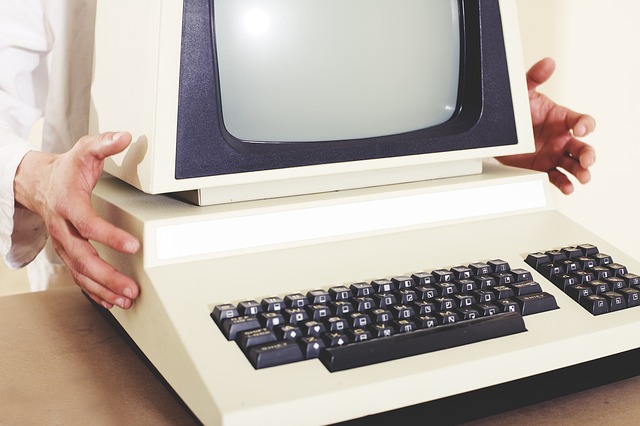Devices – Students, teachers, schools

I’m a part of a Listserv that works pretty much just in the state I live in. It is often helpful, sometimes funny and in this case a little though provoking. This morning I came across this entry (below) and it got me thinking about devices in the school.

Quickly these questions popped into my head:
- Should teachers and students have the same device?
- If teachers have a different device than students, should they also have the device that the students use?
- Should everyone in the school have the same device?
- Is it OK to give teachers older devices instead of new ones?
Let’s tackle these questions one by one.
Should teachers and students have the same device?
If your school is using Chrome OS or iPads or Android tablets as the students 1:1 device, then the answer is a hard NO. Simple as that. While Chrome OS is a laptop and a lot can be done on it there are clear limitations and sometimes a teacher needs to be able to install certain programs that are not web based. As for the tablets, typing and productivity is the clear limitation. Sure you can type a highly formatted math test on an iPad by it’ll take forever.
If your students are on MacBooks or full on Windows machines then sure it will be fine. Teachers will have the power they need, the issue is more on the student side. Managing those machines are not as easy as a tablet or Chrome OS.
- As for the new Windows 10S I am not sure. I’ve not had any experience or know anyone who has had experience with this system yet. It does sound a little limiting that you can only install apps from the Windows App store so I lean towards no, teachers and students should have different devices.
If teachers have a different device than students, should they also have the device that the students use?

The short answer is no, but hear me out. In the Listserv that person clearly feels that teachers should have a second device. The reasoning that person puts forth is pretty sound, but in reality I am not so sure. I think knowing what can and cannot be done on a device is important, but let’s think about it. How often does a teacher really need to test something out? Is it every day, week or month?
I would say that a teacher (or department) could test out an app or website and then put the device aside. I am not sure that the teacher would need the device all the time. They just need access to the device. While this isn’t exactly convenient it will keep a lot of devices being allocated to teachers that won’t use it.
At my school our middle school is 1:1 iPads. Each teacher has their own MacBook Air and their own iPad. The reason behind it was the iPad could help the teachers capture and create better than a laptop. The reality is that most of our teachers do not use these devices in that manner. When I took inventory of them this year there was more than one time that a teacher commented that they rarely use it at school. I also rarely see teachers out an about with them. While the logic behind the decision was sound it must certainly be questioned.
There is a possibility here though and I think it is hinted at in the post. If a school has already gotten the life out of a device. For example if a laptop is supposed to only last 4 years but is still functioning past that date, then it may be OK to give those to teachers as long as the teachers do not expect the school or district to repair or replace them as they fail.
Should everyone in the school have the same device?
Nope! Just too darn expensive. A Chromebook can start around $200 for a decent one. iPads start around $300. At our school our teachers have MacBook Airs which start at $1000. Pretty simple to see that while it would be great to give all of our students MacBook Airs, it just isn’t financially responsible.
Even if you start sizing up Windows laptops. While cheaper, they are still far more expensive than iPads and Chromebooks. Heck even some of the newer Windows 10 S laptops are pretty cheap.
Is it OK to give teachers older devices instead of new ones?

I have seen this. A teacher comes in and is assigned a device that may be 3–4 years old. In fact I see this practice at most schools. It is totally OK as long as the school is willing to support and help maintain the device and that the school has a plan on how to replace these machines with new ones. That last part is the key. A teacher will struggle with a laptop for a year if they know that right around the corner is a shiny new one.
Let me give you an example of the other case. I once worked at a school where I was given a Windows desktop. The problem was that it only had 1GB of RAM and the Windows OS hadn’t been properly updated or really maintained. It turned out the computer was almost 10 years old. Booting up was 3 minute process and trying to print would take just as long with a 50/50 chance of actually printing. The hard drive was nearly full (from past users who had not been deleted) and no one really responded to my IT tickets. The machine became basically unusable for anything but reading email.
I ended up unplugging it and storing it in my classroom closet and just used my personal laptop.
So how would you respond to those questions and what questions did I miss? Be sure to put them in the comments below!
Source: IT Babble Blog and Podcast